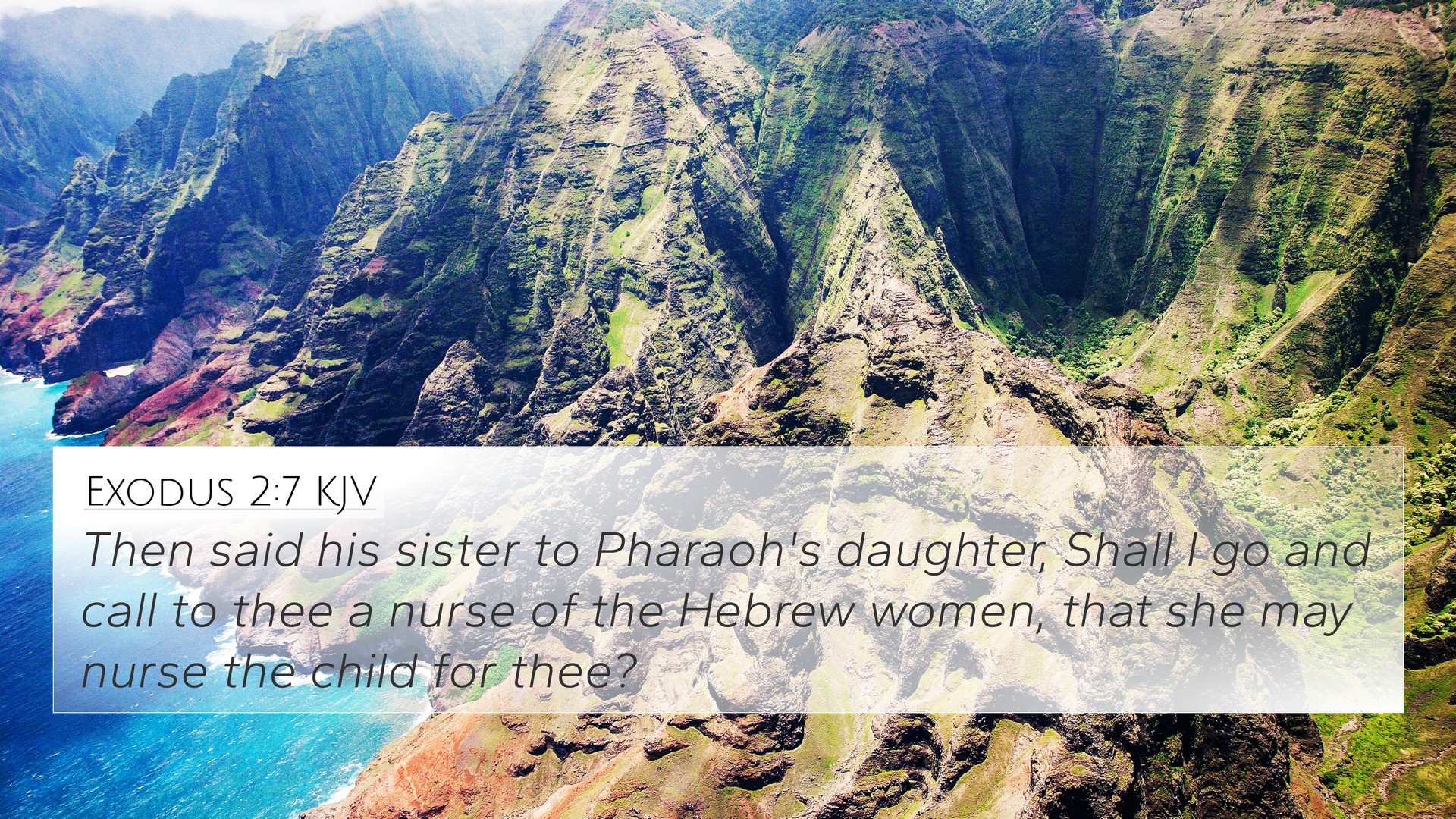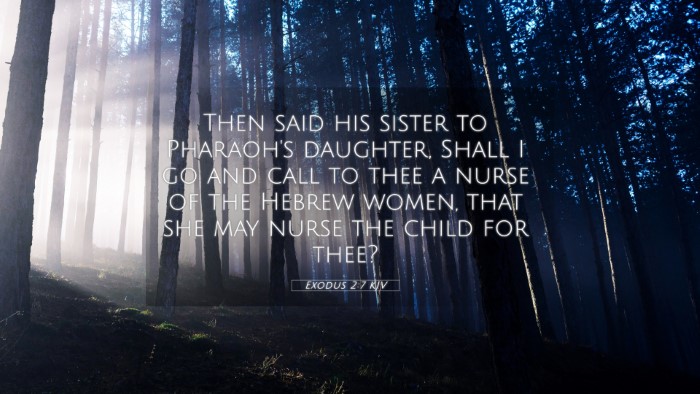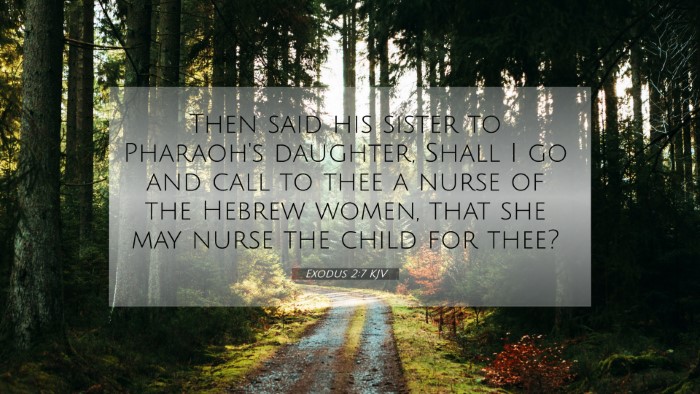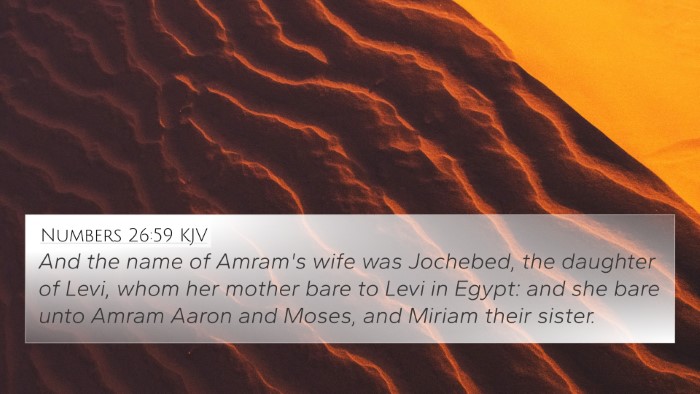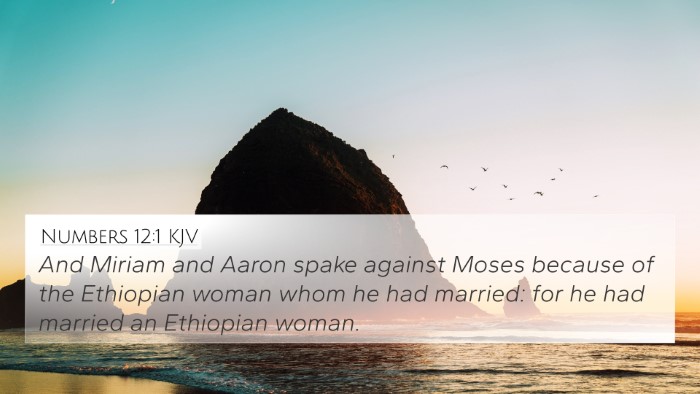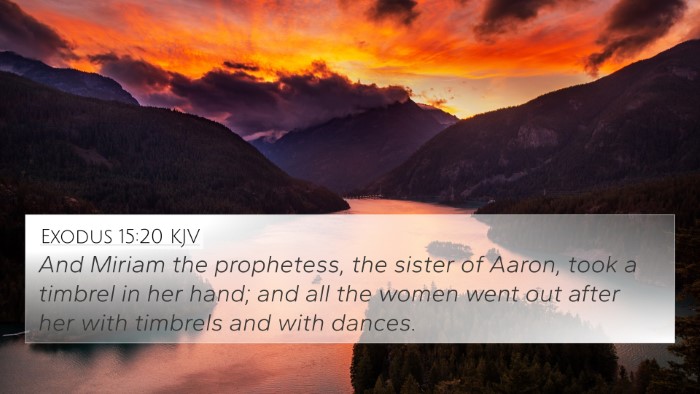Exodus 2:7 - Summary, Meaning, and Interpretation
Exodus 2:7 details the moment when Miriam, the sister of Moses, approached Pharaoh's daughter to offer assistance in finding a Hebrew nurse for the found child, who is Moses himself. This verse serves as a critical point in the narrative, revealing the divine orchestration behind Moses' rescue and the start of his journey towards becoming Israel's deliverer.
Verse Text
Exodus 2:7 (KJV): "Then said his sister to Pharaoh's daughter, Shall I go and call to thee a nurse of the Hebrew women, that she may nurse the child for thee?"
Insights from Public Domain Commentaries
-
Matthew Henry:
Henry emphasizes the ingenuity and courage of Miriam in this situation. Her initiative not only demonstrates her love and protectiveness over her brother but also indicates her faith in God's plan. The act of consulting Pharaoh's daughter reflects the providence of God, orchestrating events that lead to Moses's upbringing in a royal household.
-
Albert Barnes:
Barnes notes the strategic placement of Miriam as a mediator between the Hebrew women and the Egyptian royalty. He highlights that this was not just a mere suggestion but rather a remarkable opportunity that God orchestrated to ensure Moses remained connected to his roots while simultaneously being raised in an environment that would prepare him for his future role.
-
Adam Clarke:
Clarke discusses the cultural implications of Miriam's offer. He points out the significance of women’s roles in nurturing and safeguarding life in ancient Hebrew society. Clarke also reflects on the broader theme of God’s providence, showcasing how seemingly minor interactions and decisions culminate in His grand design for Israel's salvation through Moses.
Key Themes and Interpretations
-
Divine Providence:
The verse showcases God's sovereignty and providence in safeguarding Moses, who would lead the Israelites out of bondage. This theme of divine intervention can be linked with other passages, such as Psalm 91:11-12 and Jeremiah 29:11, where God is acknowledged as a protector and guide.
-
Role of Women:
The chapter emphasizes the crucial roles women played in the narrative. Miriam's proactive behavior exemplifies how God used women as essential instruments in His plans. This theme resonates with examples like Esther 4:14 and Luke 1:38, illustrating the strength and courage of women in Biblical history.
-
Faith and Initiative:
Miriam's faith is evident in her willingness to approach Pharaoh's daughter. This encourages believers to act with faith in God's promises, connecting with James 2:26, which speaks to faith being complemented by action.
Cross-Referencing Biblical Texts
Exodus 2:7 is richly connected to other scriptures, enhancing the understanding of its themes:
- Exodus 1:22: The backdrop featuring Pharaoh's decree to kill Hebrew boys.
- Hebrews 11:23: Faith of Moses' parents in preserving his life.
- Acts 7:21-22: Stephen recounts Moses's upbringing in Pharaoh's house.
- Proverbs 3:5-6: Trust in God and recognizing His paths.
- Psalm 127:3: Children are a heritage from the Lord, emphasizing family significance.
- 1 Peter 3:12: The Lord considers the righteous, which can be linked to Miriam's actions.
- Isaiah 54:13: Assurance of God’s protection over children, paralleling the preservation of Moses.
Understanding and Applications
This verse encourages believers to recognize how God operates through individuals and circumstances to fulfill His purposes. Understanding these connections through cross-referencing helps deepen one’s faith and understanding of scripture.
For anyone studying the Bible, recognizing the connections between Bible verses like Exodus 2:7 and others mentioned can illuminate themes of divine providence, faith, and protection. Employing tools for Bible cross-referencing can significantly aid in this study, revealing how to find cross-references in the Bible.
Conclusion
Exodus 2:7 serves not just as a historical account but also as a foundational moment that prompts believers to reflect on the intricate ways God works through everyday situations. Through careful examination of interconnected scriptures, one can see how God’s hand is continually present in the lives of His people.
